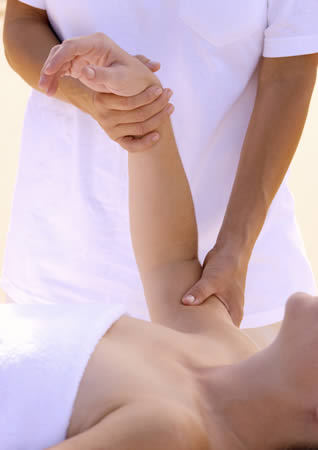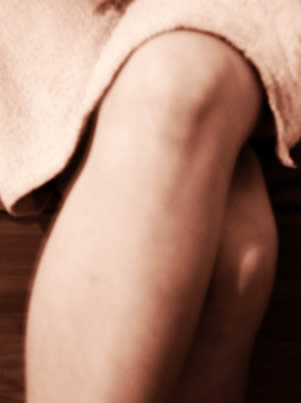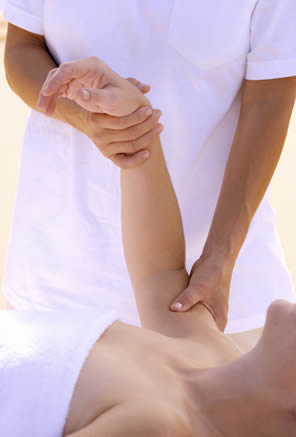It is important to help exercise a patient’s passive range of motion especially when they do not spend a lot of time outdoors or getting physically active. These motions serve to provide a sort of physical exercise for the patient and they help keep their blood circulation to function properly as well as prevent any infection which may be caused by being sedentary or confined to the bed for extended periods of time. Through these checks as well, you will be able to assess just how slow or fast the patient is recovering from their illness.
The first thing that you have to do when you are about to administer these checks on a patient is to knock on the patient’s door and greet them by their name. Introduce yourself to the patient and explain to them why you are there at that time. It is important that you do not try to invade the patient’s privacy by entering the room without their permission or without calling out their name first. It can cause some degree of anxiety to the patient especially if they are not familiar with you.
 Next, you have to place the patient on a position which will make them easily accessible to you and this can be accomplished in a variety of forms: the high-Fowler position, the supine position, and the semi-Fowler position. Whichever of these positions are comfortable to your patient should be the one adapted.
Next, you have to place the patient on a position which will make them easily accessible to you and this can be accomplished in a variety of forms: the high-Fowler position, the supine position, and the semi-Fowler position. Whichever of these positions are comfortable to your patient should be the one adapted.
After getting them into their desired position, start checking the patient’s range of motion starting with the head. Ask them to move their head from left to right and up and down. You should take note however whether your patient is suffering from a head or spinal injury before asking them to do so.
Next, move to the patient’s arms. Ask them to extend and contract their arms moving forward and bending them at the elbow joints. Let them do this for a couple of times and then proceed to having them to bring their arms towards their body and to do this in a way that their arms would be crossed in front of them.
After this, tell them to move their wrists and fingers and to flex and move them in the most convenient manner. Then, ask them to move their knees and extend them and then bring them back again near to their body. Ask them to do this for at least ten times before proceeding.
The last thing to check on a patient’s passive range of motion is their feet and ankle movement. Ask them to move and twist their ankles and toes in a way that is most convenient to them going left and right to make sure that they maintain a healthy range of motion. This check usually should be done about two to three times daily and can be incorporated with other CNA tasks such as dressing. You need to make sure that you do this regularly to avoid letting the patient have stiff joints and muscles.
You can visit this page to learn more about providing ROM exercises to the hip, leg, and ankle, or visit this page to learn more about providing ROM for one shoulder.
 After this, wash your hands thoroughly and put on your personal protective equipment. This is to avoid the spread of infection and to protect the patient as well.
After this, wash your hands thoroughly and put on your personal protective equipment. This is to avoid the spread of infection and to protect the patient as well. m,The next step is to wash your hands and wear personal protective equipment. This will help to prevent the spread of infection or disease to your patient. Then, with the patient in a lying position, raise the patient’s knee toward their torso and then back to the mattress. This will provide a flexion and extension exercise to the patient’s hips and knees will help maintain flexibility and blood circulation.
m,The next step is to wash your hands and wear personal protective equipment. This will help to prevent the spread of infection or disease to your patient. Then, with the patient in a lying position, raise the patient’s knee toward their torso and then back to the mattress. This will provide a flexion and extension exercise to the patient’s hips and knees will help maintain flexibility and blood circulation. After all of these introductions, wash your hands thoroughly and wear the appropriate personal protective equipment for the proper handling of the patient. Place the patient in a comfortable position and make sure that you have addressed their safety and privacy concerns. It is important their preferences should also be taken into consideration when doing this process. Support the patient’s left or right extremity depending on which arm is to be exercised. Bend and extend their elbows at the joints in order to provide flexion and extension exercises to the patient’s arm. Ask them if they are feeling any pain or discomfort during the process and make sure that you do not force or overextend the patient’s extremities.
After all of these introductions, wash your hands thoroughly and wear the appropriate personal protective equipment for the proper handling of the patient. Place the patient in a comfortable position and make sure that you have addressed their safety and privacy concerns. It is important their preferences should also be taken into consideration when doing this process. Support the patient’s left or right extremity depending on which arm is to be exercised. Bend and extend their elbows at the joints in order to provide flexion and extension exercises to the patient’s arm. Ask them if they are feeling any pain or discomfort during the process and make sure that you do not force or overextend the patient’s extremities.